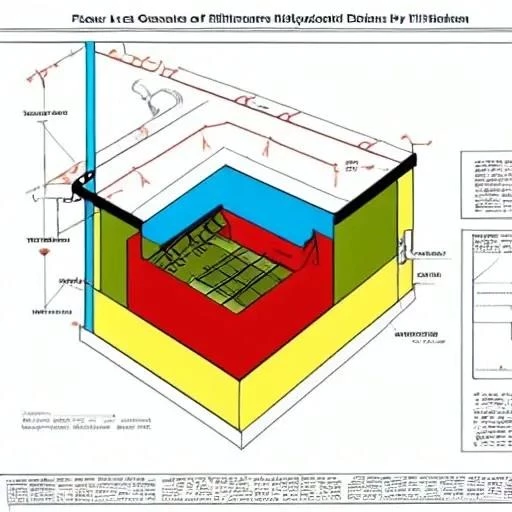
The kitchen sink‚ often perceived as a mere utility‚ a simple basin for washing dishes‚ holds far more profound significance than its humble appearance suggests. It’s an indispensable cornerstone of any culinary space‚ a silent workhorse revolutionizing daily routines and shaping the very ergonomics of our kitchens. Yet‚ how often do we truly pause to consider the intricate engineering‚ the thoughtful design‚ and the surprising ‘depths’ – both literal and metaphorical – that define this everyday marvel?
From its earliest iterations as a simple trough to the sophisticated‚ multi-functional hubs we see today‚ the kitchen sink has undergone an incredible evolution. It’s not just about how far down the basin goes; it’s about the subterranean network of plumbing‚ the ergonomic considerations influencing posture and comfort‚ and the innovative materials pushing the boundaries of durability and aesthetics. Understanding these underlying layers reveals a world where form undeniably meets function‚ driving forward a future where our kitchens are not just practical but profoundly inspiring.
| Aspect | Description / Common Range | Key Considerations |
|---|---|---|
| Standard Depth (Internal) | Generally 8 to 10 inches (20-25 cm) | Suitable for most households; balances capacity with comfort. |
| Deep Sinks (Internal) | 10 to 12 inches (25-30 cm) or more | Ideal for large pots‚ baking sheets‚ or families; requires more bending. |
| Shallow Sinks (Internal) | 6 to 8 inches (15-20 cm) | Often found in bar sinks or secondary prep sinks; less splashing. |
| Overall Installation Depth | Includes sink‚ plumbing (P-trap‚ disposal)‚ and cabinet space. Can extend 18-24 inches (45-60 cm) below the countertop. | Critical for cabinet design and accessibility for maintenance. |
| Common Sink Types | Undermount‚ Drop-in (Top-mount)‚ Farmhouse (Apron-front) | Each type has unique installation requirements and aesthetic impacts on overall depth perception. |
The Ergonomic Imperative: Designing for Human Interaction
The literal depth of a kitchen sink‚ typically ranging from 8 to 10 inches for standard models‚ is not an arbitrary measurement. It is the culmination of extensive ergonomic research‚ considering the average human stature and the repetitive motions involved in food preparation and cleaning. A sink that’s too shallow can lead to excessive splashing‚ turning a routine task into a messy ordeal. Conversely‚ a sink that’s excessively deep might force users to bend uncomfortably‚ causing back strain over time‚ a concern particularly for taller individuals or those with mobility challenges.
Leading kitchen designers emphasize that the ideal depth strikes a delicate balance between maximizing capacity for large pots and maintaining comfortable access. “The perfect sink depth is one you don’t even notice‚” explains Sarah Chen‚ a renowned kitchen architect. “It seamlessly integrates into your workflow‚ supporting your posture rather than challenging it.” By integrating insights from user studies and biomechanical analyses‚ manufacturers are crafting sinks that are not just beautiful but incredibly effective in promoting well-being in the kitchen.
Beneath the Surface: The Plumbing Labyrinth
While the basin captures our immediate attention‚ the true mechanical “depth” of a kitchen sink lies hidden beneath the counter. This unseen labyrinth of pipes‚ traps‚ and connections is a testament to sophisticated plumbing engineering. The P-trap‚ a curved section of pipe‚ is a deceptively simple yet brilliantly effective device‚ preventing noxious sewer gases from entering your home by maintaining a water seal. Beyond this crucial component‚ the installation accommodates everything from powerful garbage disposals – grinding food waste into manageable particles – to complex filtration systems‚ ensuring clean drinking water directly from the tap.
Modern plumbing solutions are increasingly focused on efficiency and sustainability. Innovations such as compact waste disposal units and advanced water-saving aerators are becoming standard‚ minimizing environmental impact while maximizing functionality. The overall space required for these components‚ including the sink itself‚ plumbing‚ and essential clearances‚ can easily extend 18 to 24 inches below the countertop. This necessitates careful planning during cabinet design‚ highlighting the integrated nature of kitchen infrastructure.
Materials and the Future: Sinking into Innovation
The materials used to construct a kitchen sink profoundly influence its durability‚ aesthetics‚ and even its perceived depth. Stainless steel‚ long a staple for its resilience and easy maintenance‚ offers a sleek‚ modern look. Cast iron‚ often coated in enamel‚ provides a robust‚ classic feel‚ capable of withstanding decades of use. More recently‚ composite materials like granite or quartz have surged in popularity‚ offering a vast array of colors and textures‚ alongside impressive resistance to scratches and heat.
Looking ahead‚ the future of the kitchen sink is remarkably bright and increasingly smart. We are anticipating integrated touch controls for water temperature and flow‚ UV sterilization systems for enhanced hygiene‚ and even voice-activated features. Imagine a sink that can weigh ingredients‚ display recipes on an embedded screen‚ or automatically fill a pot to a precise level. These advancements are not distant dreams but active areas of development‚ promising to transform the sink from a mere utility into an intelligent command center‚ deeply integrated into the smart home ecosystem.
